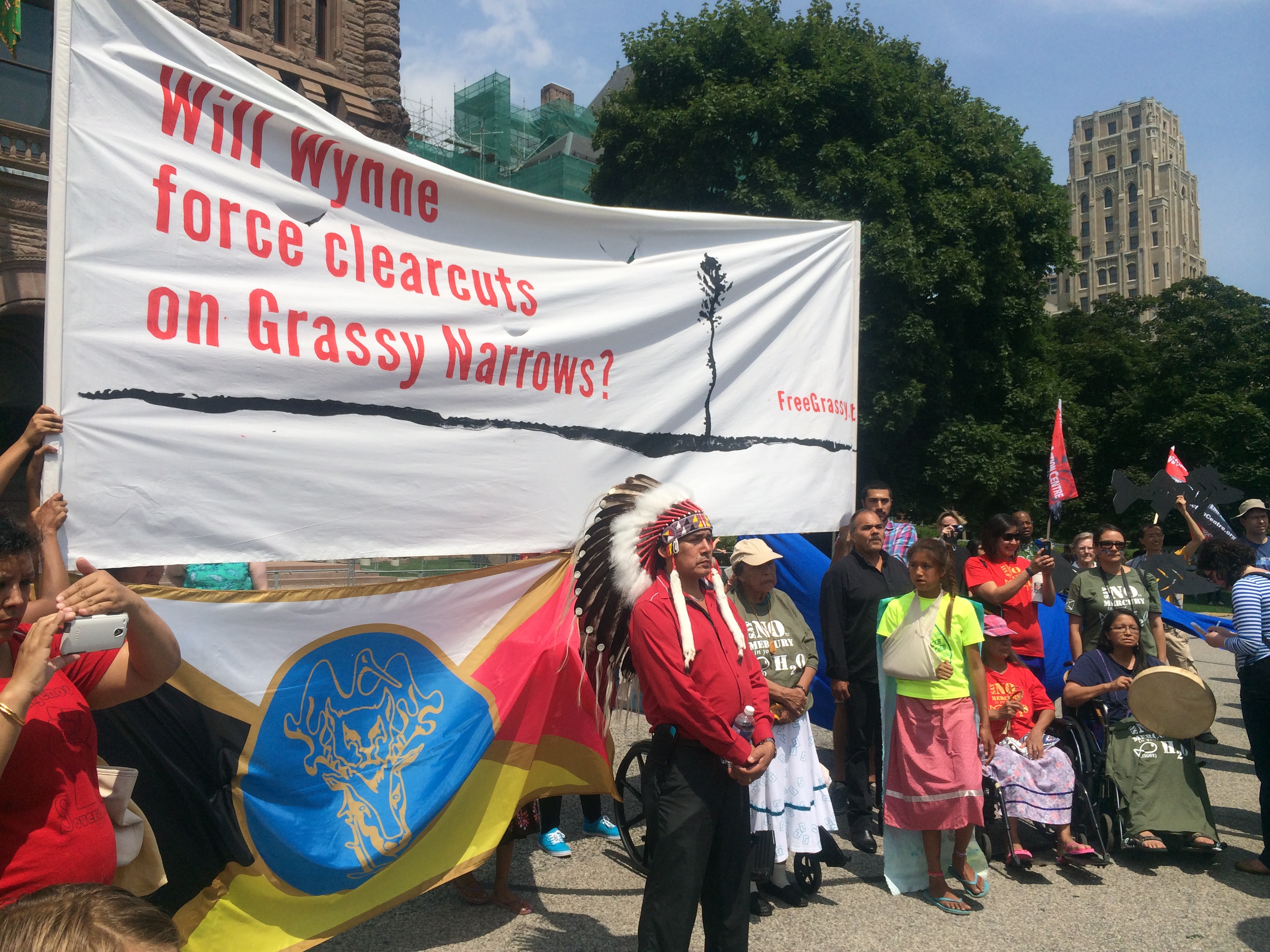Like this article? rabble is reader-supported journalism. Chip in to keep stories like these coming.
After decades of environmental neglect, the water that flows through Grassy Narrows (Asabiinyashkosiwagong Nitam-Anishinaabeg) First Nation still remains and needs to be properly cleaned up. Even as experts in the field claim that the Wabigoon-English River can be cleaned of its deadly mercury legacy, politcians don’t seem to care.
Most likely this is Attawapiskat syndrome, where in the past, the amount of attention Ottawa gives to an Indigenous problem is directly related to how close the First Nation is to our country or province’s seat of power.
The suffering in Grassy Narrows has been multi-generational as children and elders alike suffer from a range of debilitating effects of poisoned water such as loss of vision, imbalance and trembling associated with Minamata Disease.
Minamata Disease, which first occurred in the town of Minamata, Japan, in 1956, is a neurological syndrome caused by severe mercury poisoning. It can be both chronic and congenital, thus tainting the blood of those exposed to too much mercury as much as it can poison the water.
In this way, we are linked to the earth and the earth is linked to us.
I can only imagine what it must be like to be a grandmother or mother and watch your child suffer from the debilitating effects of chronic mercury poisoning, noting that a scientific solution is present and yet the political willpower is lacking?
To this day, even with a so-called friendly premier in Wynne, nothing concrete has yet been done to clean the Wabigoon River even 45 years since a paper mill first dumped 9,000 kilograms of mercury into the waterways.
This toxin is not only found in the water and the surrounding sediment but also the fish that many of the reserve rely on as an accessible traditional food source of protein. It is much cheaper to fish despite the risks than purchasing meat from the groceries.
As Treaty Three Anishinaabe, Grassy Narrows First Nation has pleaded with all levels of government to no resolve.
The Anishinaabe experienced mercury poisoning from Dryden Chemical Company, a chloralkali process plant in the pulp and paper industry, located in Dryden, Ontario, as well as the Dryden Pulp and Paper Company. Both ceased in 1976, after 24 years of operations.
Grassy Narrows First Nation received a settlement in 1985 from the Canadian government and the Reed Paper Company that bought out the Dryden Pulp and Paper Company and its sister-company Dryden Chemical Company, but the mercury was never actually removed from the water.
The fish from the Wabigoon-English River System have up to 150 times the safe daily dose of mercury.
Grassy Narrows currently has the longest Indigenous blockade in Canadian history as it attempts to protect the water from logging which only exasperates the mercury problem through erosion into the river system.
According to a 2005 report, while eighteen per cent of fish are unsafe to eat around unlogged lakes, one hundred per cent are unsafe to eat around logged lakes.
The First Nations community is again calling upon the government to remove the heavy metal toxin from the river system.
On August 27, 2015, Grassy Narrows declared a state of emergency over the unsafe drinking water.
Grassy Narrows youth, traditional drummers, mercury survivors, and a thousand supporters from social justice, environmental, faith, and labour movements are converging downtown on Thursday June 2, 2016, at Queen’s Park starting at 12:00 pm noon.
Photo: David Coombs



